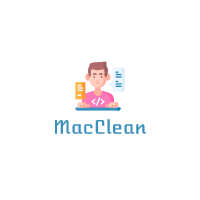The task of how to speed up Mac devices may be quite urgent, especially for Apple’s older models. When you buy a new Mac, it is fast enough to cope with all the tasks you intend to complete on your device. However, over time, it gradually becomes slower and one day you find that it simply fails to complete a task that previously was not a problem. Your Mac computer is no longer as fast as it used to be and its slow performance becomes annoying. Such a horror should be somehow fixed so we offer you a few hints on how to speed up a Mac device and return it to smooth and reliable working condition via several simple maintenance procedures. Our guide may be applied to various kinds of relatively old Apple devices, be they iMac, Mac mini, or MacBook Pro portable models.
Overall, Macs are really smart computers and they retain decent capabilities even being old, but if the user does not properly care for them, they may become notably slower. So it would be logical to ask what kind of maintenance I should provide for my Mac to keep it running at a respectable speed even if it is somewhat oldish. What are the most important aspects of my ideal care for the Mac devices? And how can I recover it back to good shape if I, for some reason, have neglected its maintenance?
Updating Your macOS
Apple provides perfect long care for its hardware products by keeping them updated for many years (actually up to 7 years). The company places a considerable effort on updating the existing software to keep aging Mac devices up and running without any notable obsolescence. In this process, a central place is given to updating Mac operation systems. So, if you encounter a need to update your device, let it be, for example, a MacBook Pro 2012, check if there are some proper updates. For this to be done, use the following sequence:
Head to Apple Menu > About This Mac > Software Update or open App Store > and select the Updates tab at the top.
If you find any relevant updates, hit Update. And do not forget to restart after installation.
Old and Corrupted Caches: Just Rebuild Them
Cache means any kind of software or hardware mechanism that enables faster access to once requested data. For that purpose, the computer stores other data, mainly in the form of requests and responses that allow faster identification of the necessary data on the second and further requests. For the sake of simplicity, that other data is also called cache. Such cache is stored in the form of various files, codes, in particular, on a hard disk taking up their free space reducing the device’s performance. The task to clear disk space is sometimes very difficult unless you resort to the services provided by special cleaner apps, like MacFly Pro or others. In order to remove accumulated junk, you need to follow this sequence of actions:
SEE ALSO How To Clean Junk Files on Mac
First, if do the job without engaging the third-party apps, i.e. using only the capacities of your device’s operation system: head to Finder > then Go in Menu Bar > and here select Go to Folder. At this stage, your task is to empty two locations. You can reach the first one by pasting /Library/ Caches (System cache), and the second one is located at ~/ Library/ Caches/ (User cache). Just choose all files and folders inside (Cmd + A) and send them to Trash.
Switching Time Machine to Manual
Apple has designed Time Machine as a built-in app to backup and restore your Mac by means of an automatic backup of your Mac’s content to an external drive. The schedule of the Time Machine cannot be changed unless you are using a third-party app (not recommended). The first backup often slows down the whole performance as the process involves lots of resources on your system. However, once you complete the first backup, the following ones (as a rule, made on an hourly basis) won’t delay your machine in any noticeable way.
In case of serious performance drawbacks during Time Machine backups, first, make sure your device is not running any background scans. Considerable hick-ups usually happen when antivirus or other scanning takes place on the top of Time Machine scheduled backup. Just cancel or postpone the process to bring your Mac back to normal.
If performance issues persist, you may switch off automatic backup and use the manual one. For this to be done, after setting up the backup drive and running the initial backup, just turn off Back Up Automatically in the Time Machine settings and choose Show Time Machine in the menu bar.
Now you can initiate manual backup via ctrl+click the Time Machine icon in Menu Bar > hit Back Up Now.
Note: Apple has optimized Time Machine for smooth and seamless work causing no overall system slowdown. That’s why any issue with hourly backups should be assessed as a serious disorder, and you should immediately look for its source.


4 comments